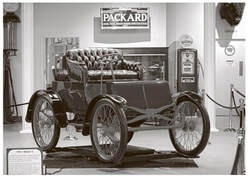Buffalo Transportation and Pierce Arrow Museum
*Rare 1904 pierce Arrow, donated to Buffalo Transportation and Pierce Arrow Museum
*Buffalo signs off on Pierce-Arrow Museum's request to buy city streets
|
click button to the right for museum website
|
